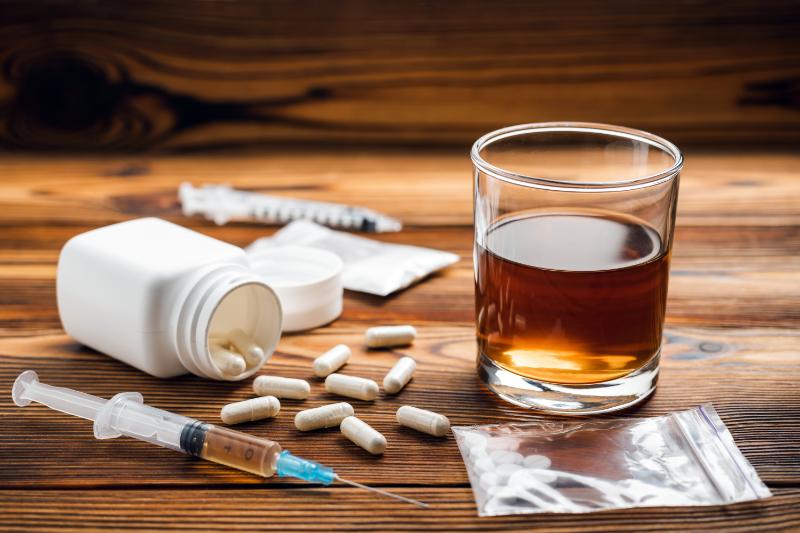
Substance abuse is a serious issue that affects millions of people worldwide, and its impact can be devastating not only for individuals struggling with addiction but also for their families and communities. Fortunately, substance abuse treatment programs offer hope, providing structured, evidence-based approaches to help people overcome addiction and regain control of their lives. Whether you or a loved one is struggling with substance abuse, understanding the different types of treatment programs available is a crucial step toward recovery.
In this article, we will explore the various substance abuse treatment options, how they work, and what to consider when choosing the right program for your needs.
Table of Contents
What Is Substance Abuse Treatment?
Substance abuse treatment refers to a range of therapeutic interventions and support services aimed at helping individuals stop using drugs or alcohol, maintain sobriety, and improve their quality of life. These programs address both the physical and psychological aspects of addiction, helping individuals develop healthier coping mechanisms and strategies to avoid relapse.
Substance abuse treatment programs are often tailored to each person’s specific needs, as no two cases of addiction are exactly the same. The right treatment approach can vary based on factors such as the type of substance used, the duration and severity of the addiction, and any co-occurring mental health conditions.
Types of Substance Abuse Treatment Programs
- Inpatient or Residential Treatment Inpatient or residential substance abuse treatment programs are intensive, live-in programs where individuals receive 24/7 care and supervision. These programs are ideal for individuals with severe addictions or those who have not had success with outpatient treatments. The controlled environment allows patients to focus entirely on their recovery without the distractions or temptations of the outside world.
- Detoxification (Detox): Many inpatient programs begin with a detox phase, where the body is cleansed of the harmful substances under medical supervision. This process helps manage withdrawal symptoms and prepares the patient for further treatment.
- Therapy and Counseling: After detox, patients participate in various therapies, including individual counseling, group therapy, and family therapy. The goal is to address the psychological and behavioral aspects of addiction while building a solid foundation for long-term recovery.
- Outpatient Treatment Outpatient substance abuse treatment programs are less intensive than inpatient programs and allow individuals to live at home while attending treatment sessions. This option is ideal for those with milder addictions or those who have completed inpatient treatment and are transitioning back into their everyday lives.
- Intensive Outpatient Programs (IOPs): IOPs require individuals to attend treatment sessions several times a week while maintaining their daily responsibilities, such as work or school. These programs include counseling, relapse prevention strategies, and support group meetings.
- Partial Hospitalization Programs (PHPs): PHPs are a step down from inpatient care and involve structured treatment for several hours a day. Individuals return home in the evenings, allowing them to receive intensive care without full-time residential treatment.
- Behavioral Therapy Behavioral therapies are a core component of most substance abuse treatment programs. These therapies aim to change harmful patterns of thinking and behavior that contribute to addiction while teaching individuals how to manage triggers and stress in healthier ways.
- Cognitive Behavioral Therapy (CBT): CBT helps individuals identify negative thought patterns and behaviors that lead to substance use. By addressing these triggers, patients learn new ways to cope with stress, anxiety, and cravings.
- Dialectical Behavioral Therapy (DBT): DBT is often used to treat individuals with co-occurring mental health disorders. It focuses on emotional regulation and improving interpersonal relationships, which can be critical for maintaining sobriety.
- Motivational Interviewing (MI): MI is a counseling technique that helps individuals find internal motivation to make positive changes. It is particularly effective for those who may be ambivalent about seeking treatment.
- Medication-Assisted Treatment (MAT) For individuals struggling with opioid or alcohol addiction, medication-assisted treatment (MAT) can be an effective option. MAT combines FDA-approved medications with behavioral therapies to help reduce cravings, ease withdrawal symptoms, and support long-term recovery.
- Methadone, Buprenorphine, and Naltrexone: These medications are commonly used to treat opioid addiction. They work by reducing the brain’s response to opioids, making it easier to manage cravings and withdrawal symptoms.
- Disulfiram and Acamprosate: These medications are used to treat alcohol dependence by either creating unpleasant reactions when alcohol is consumed or reducing cravings.
- Support Groups and Aftercare Recovery doesn’t end when formal treatment is over. Aftercare and ongoing support are essential for maintaining long-term sobriety. Many substance abuse treatment programs include aftercare planning to help individuals transition back into their daily lives.
- 12-Step Programs: Programs like Alcoholics Anonymous (AA) and Narcotics Anonymous (NA) are peer support groups that follow a structured, step-by-step process for recovery. These groups provide ongoing emotional support and a sense of community for individuals in recovery.
- Sober Living Homes: For those who need additional support before fully reintegrating into their everyday lives, sober living homes offer a drug-free environment where individuals can practice living independently while still receiving guidance and support.
How to Choose the Right Substance Abuse Treatment Program
- Assess Your Needs The first step in choosing a substance abuse treatment program is to assess your needs. Consider the severity of the addiction, any co-occurring mental health issues, and your living situation. Those with more severe addictions or unsafe home environments may benefit from inpatient programs, while individuals with supportive families and less severe substance use may succeed with outpatient care.
- Consult with a Professional Consulting with a healthcare professional or addiction specialist can help you make an informed decision about the best treatment option. They can assess your condition, recommend appropriate treatment programs, and guide you through the recovery process.
- Consider the Program’s Approach Different programs use different treatment methods, so it’s essential to find one that aligns with your goals and needs. For example, if you prefer a program that integrates both medication and therapy, look for one that offers medication-assisted treatment. If you value peer support, a program that incorporates 12-step meetings or group therapy may be beneficial.
- Look for Accredited Programs It’s important to choose a treatment program that is accredited and licensed by relevant health organizations. Accreditation ensures that the program meets high standards of care and has qualified professionals on staff.
- Consider Cost and Insurance Substance abuse treatment programs vary widely in cost. Be sure to check whether your health insurance covers treatment and whether the program offers payment plans or financial assistance. The cost of treatment should not be a barrier to recovery, as many programs offer affordable options or sliding scale fees.
Conclusion
Substance abuse treatment programs offer a lifeline for those struggling with addiction, providing the tools and support necessary to achieve lasting recovery. Whether you choose an inpatient, outpatient, or medication-assisted treatment program, the key is finding a plan that meets your unique needs. By taking the first step to seek help, individuals can overcome the challenges of addiction and build a healthier, more fulfilling life.


